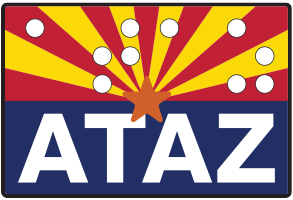Useful links PDF version 528kb, 1 page
Overview
Combined vision and hearing loss (CVHL) can apply to a wide spectrum of experiences. While everyone in this population will have some degree of both vision loss and hearing loss, it can vary from mild hearing loss and visual impairment to someone who is both Deaf and totally blind. The term “DeafBlind” is used for people who are part of the Deaf community and also have some degree of vision loss, whether that is legal blindness or a minor visual impairment. When working with someone who has combined vision and hearing loss, it is important to know which sensory loss came first to understand what types of communication and technologies they are more familiar with, what needs to be adjusted to accommodate the new sensory loss, and what they still may need to learn.
Medical Aspects
There are a wide range of conditions that may result in a person having combined vision and hearing loss. The two senses may be affected separately, such as a person who is born legally blind and later loses some of their hearing in an accident or to aging. There are also genetic disorders, such as Usher syndrome, that can affect both hearing and sight throughout the lifetime. Some medical conditions are progressive and could require separate treatment. An audiologist and an Ear, Nose and Throat doctor may be involved in treating hearing loss, while an ophthalmologist, optometrist, or clinical low vision specialist may be involved in treating vision loss.
Communication
People who have combined vision and hearing loss typically have a preferred communication mode that may be visual, auditory, and/or tactile. People may use remaining hearing, if any, for spoken communication with or without the use of hearing aids to amplify sound. The use of hearing aids will depend on the severity of loss and on individual preference. American Sign Language (ASL) is a visual language that is common for people who were Deaf before experiencing vision loss, but can also be learned by someone whose hearing loss is the secondary disability. ASL can be adapted to fit in the individual’s field of vision depending on the type of vision loss. Tactile sign language, a type of ASL that uses tactile feedback in the hands or body, can also be used for people with more significant vision loss. People may also benefit from the use of large print materials, digital recorders, or braille.
Rehabilitation
A person with combined vision and hearing loss may require rehabilitation services to learn how to orient themselves to their disability. Orientation and Mobility Specialists can teach people how to orient themselves in their environment and navigate safely with a loss of sight. A Rehabilitation Teacher can offer people with vision loss instruction in home and personal management, such as cleaning and using money. Assistive technology specialists teach students how to use technology for both types of sensory loss, and adjustment to disability counseling may be beneficial to help people adjust emotionally to their disability.
Assistive Technology (AT)
The use of assistive technology for people with combined vision and hearing loss will often depend on which sensory loss occurred first. Typically, the devices a person used before the secondary loss will be adapted as much as possible to the newer disability. As a result, a combination of assistive technology for both vision loss and hearing loss may be used. Assistive technology may be purchased privately, with assistance from programs such as AzTEDP or iCanConnect, or prescribed by specialists in order to match the functional needs of the individual to a specific device.
Assistive Technology to Accommodate People with Combined Vision and Hearing Loss
AT for Hearing Loss:
- Alerting Systems
- Amplified or captioned telephones
- Video phone technologies
- Personal Amplification Systems
- Smart phone apps or settings
AT for Vision Loss:
- Devices with talking or tonal feedback
- Magnifiers
- Screen magnifiers and readers
- OCR
- Braille devices
 ATArizona.com
ATArizona.com 